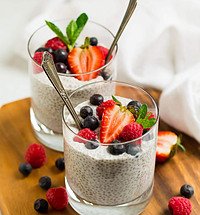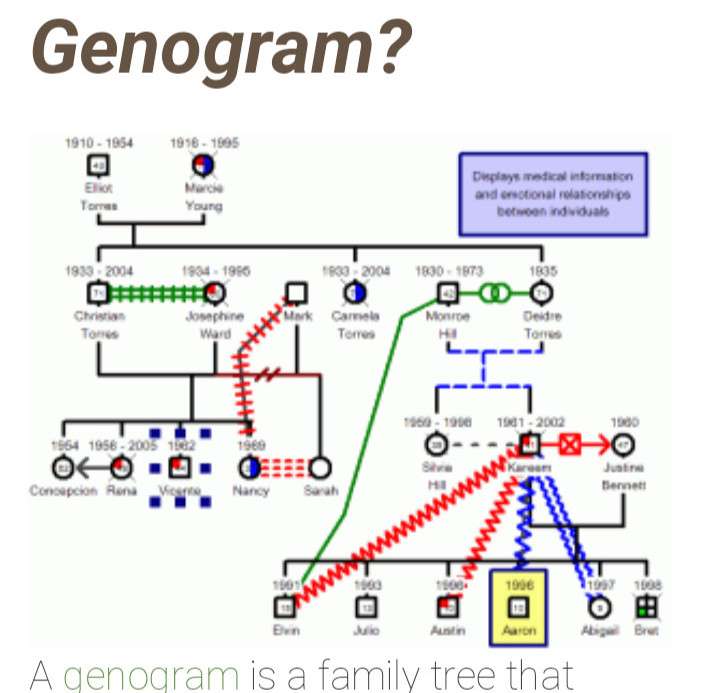How to Create a Hydroponic Garden – Soil-Free Paradise
Growing fresh vegetables and herbs doesn’t have to wait for the perfect season or require a backyard. Learning how to create a hydroponic garden opens up a world of possibilities for anyone wanting to grow plants indoors, regardless of space limitations. Whether you’re living in an apartment or want more control over your growing conditions, creating a hydroponic garden is easier than you might think and can provide fresh produce year-round.

How To Create a Hydroponic Garden
Hydroponic gardening involves growing plants in nutrient-rich water instead of soil, resulting in faster growth rates and larger harvests. This method works perfectly for people living in small spaces, mature individuals looking for easier gardening options, and anyone who wants to grow fresh food regardless of weather conditions. Let’s explore how to create a hydroponic garden adventure today.
What Is Hydroponic Gardening?
Hydroponic gardening is a method of growing plants without soil, using a water-based solution enriched with nutrients. The name comes from Greek words “hydro” (water) and “ponos” (work) – literally letting water do all the work! Instead of soil, plants obtain their nutrients directly from a carefully balanced water solution, often supplemented by growing mediums such as vermiculite, perlite, or coconut coir. here is a link: https://amzn.to/45WHEXA
This growing method offers several advantages over traditional soil gardening, including faster plant growth, higher yields, and complete control over growing conditions. Additionally, hydroponic systems use less water than conventional gardening and eliminate soil-borne pests and diseases.
Benefits of Hydroponic Gardening
• Faster Growth: Plants grow 25-30% faster than in soil
• Higher Yields: More produce in less space
• Year-Round Growing: Indoor control means constant harvests
• Water Efficient: Uses 90% less water than traditional gardening
• No Weeding: Eliminates the need for weeding
• Pest Control: Reduces soil-borne pests and diseases
Now that you understand the basics, let’s explore the various systems available to you.
5 Types of Hydroponic Systems for Beginners
Wick System (Easiest to Start)
The wick system is perfect for beginners because it has no moving parts or electrical components. This passive system works great for herbs, microgreens, and peppers, though it’s not ideal for water-hungry plants like tomatoes.
What You’ll Need:
• Bucket or basin for water reservoir
• Cotton or nylon cord for wicks
• Growing tray
• Growing medium (vermiculite or perlite)
• Hydroponic fertilizer
• Seedlings
How to Set It Up:
- Fill your reservoir with water and hydroponic fertilizer
- Connect wicks through holes in the growing tray bottom
- Place the growing medium and seedlings in the tray above the reservoir
- Set up lighting 6-24 inches from plants (depending on bulb type)
The simplicity of this system makes it ideal for first-time hydroponic gardeners. Let’s explore a slightly more advanced option.
Water Culture (Lettuce Raft) System
This system works exceptionally well for leafy greens, such as lettuce and spinach. Plants sit in a floating styrofoam platform while their roots dangle in nutrient-rich, aerated water below.
Additional Requirements:
• Air stone and pump for water aeration
• Styrofoam sheet for floating platform
• Net pots for seedlings
Setup Process:
- Create holes in the styrofoam sheet for net pots
- Install an air stone in the reservoir with the pump
- Float a styrofoam platform on a nutrient solution
- Place seedlings in net pots through platform holes
This system produces excellent results for salad greens throughout the year. Next, we’ll look at a more automated approach.
Ebb and Flow System
The ebb and flow system periodically floods the growing tray with nutrient solution, then drains it back to the reservoir. This method is effective for a wide range of plants and provides more control than passive systems.
Equipment Needed:
• Submersible pump
• Electronic timer
• Fill and drain tubes
• Elevated growing tray
• Stand for growing tray
This system provides excellent results but requires more monitoring than simpler methods. Let’s examine two advanced options for experienced growers.
Advanced Hydroponic Systems
Nutrient Film Technique (NFT)
The NFT system continuously circulates a thin film of nutrient-rich solution past the plant roots, providing constant access to essential nutrients and oxygen. This method works exceptionally well for herbs and leafy greens.
Aeroponic System
Aeroponic systems spray nutrient solutions directly onto suspended plant roots, providing maximum oxygen exposure. While highly effective, this system requires precise timing and monitoring.
These advanced systems offer superior results but require more experience and maintenance. Now, let’s discuss what plants work best for beginners.
Best Plants for Your First Hydroponic Garden
Starting with easy-to-grow plants ensures success and builds confidence. Here are the top choices for beginners:
Leafy Greens (Easiest)
• Lettuce varieties
• Spinach
• Swiss chard
• Kale
Fresh Herbs
• Basil
• Parsley
• Oregano
• Cilantro
• Mint
Intermediate Options
• Cherry tomatoes
• Strawberries
• Hot peppers
Focus on leafy greens and herbs for your first system, as they’re forgiving and provide quick results. Once you gain experience, you can expand to fruiting plants.
Essential Maintenance for Hydroponic Success
Lighting Requirements
Plants need 12-16 hours of light daily for optimal growth. Use high-intensity discharge lights, LED panels, or T5 fluorescent fixtures.
Position lights based on type:
• LED lights: 6 inches from plants
• Fluorescent lights: 12 inches from plants
• Incandescent bulbs: 24 inches from plants
Environmental Controls
Maintain these conditions for healthy plant growth:
• Temperature: 68-70°F for optimal growth
• Humidity: 40-60% relative humidity
• Air circulation: Ensure good airflow with fans
• pH levels: Keep water between 5.8-6.2 (slightly acidic)
Water and Nutrient Management
Replace nutrient solution every 2-3 weeks and monitor pH levels weekly. Use hydroponic-specific fertilizers containing essential macronutrients (nitrogen, potassium, phosphorus, calcium, magnesium) and micronutrients (iron, manganese, boron, zinc, copper, molybdenum, chlorine).
Proper maintenance ensures healthy plants and maximum yields. Let’s address common questions about hydroponic gardening.
Hydroponic System Comparison Chart
| System Type | Difficulty | Best Plants | Maintenance | Cost |
| Wick | Beginner | Herbs, microgreens | Low | $ |
| Water Culture | Beginner | Lettuce, spinach | Medium | $$ |
| Ebb & Flow | Intermediate | Most vegetables | Medium | $$$ |
| NFT | Advanced | Herbs, leafy greens | High | $$$$ |
| Aeroponic | Expert | All plants | Very High | $ |
Frequently Asked Questions (FAQ)
Q: What is the best hydroponic system for beginners?
A: The wick system or water culture system is ideal for beginners. Start with leafy greens like lettuce and spinach, which are forgiving and grow quickly.
Q: How often do I need to change the water in a hydroponic system?
A: Replace the nutrient solution every 2-3 weeks, or when the water level drops significantly. Monitor pH levels weekly and adjust as needed.
Q: Do hydroponic gardens need a pump?
A: Not all systems require pumps. Wick systems operate without pumps, whereas water culture systems require air pumps for aeration. Ebb and flow systems require water pumps for circulation.
Q: Can I grow hydroponic plants without artificial lights?
A: Yes, if you have access to at least 6 hours of direct sunlight daily. However, 12-16 hours of light produce better results, making grow lights beneficial for indoor setups.
Q: What are the disadvantages of hydroponic gardening?
A: The main challenges include initial setup costs, the need for precise monitoring of pH and nutrients, dependency on electricity for pumps and lights, and regular maintenance requirements. However, these challenges become manageable with experience.
Q: How much does it cost to start a hydroponic garden?
A: Basic wick systems can start around $50-100, while advanced systems may cost $500-1000+. Start small and expand as you gain experience.
Q: What’s the difference between hydroponic fertilizer and regular fertilizer?
A: Hydroponic fertilizers are specifically formulated to dissolve entirely in water and provide balanced nutrition for soilless growing. Regular fertilizers may contain particles that don’t dissolve properly.
Final Thoughts
Creating a hydroponic garden opens up incredible possibilities for growing fresh, nutritious food year-round, regardless of your living situation or climate. Whether you’re a beginner starting with a simple wick system or ready to tackle more advanced techniques, hydroponic gardening offers a rewarding way to take control of your food production.
Start small with easy-to-grow leafy greens and herbs, master the basics of pH management and lighting, then expand your system as your confidence grows. The investment in time and equipment pays off through faster growth, higher yields, and the satisfaction of harvesting fresh produce from your own indoor garden.
Remember, every expert hydroponic gardener started as a beginner. Take it one step at a time, learn from any mistakes, and enjoy the journey of discovering this fascinating growing method. Your future self will thank you for taking the first step today!
Additional Resources
- University of Arizona Cooperative Extension. “Hydroponic Food Production.” 2024.
- NASA Technical Publication. “Advanced Life Support Research.” 2023.
- Journal of Hydroponic Science. “Nutrient Film Technique Optimization.” 2024.
- International Society for Horticultural Science. “Soilless Culture Best Practices.” 2023.
- USDA National Agricultural Library. “Alternative Growing Methods.” 2024.
For the most current hydroponic research and techniques, consult university extension services and peer-reviewed agricultural journals for the most up-to-date information.
References
Embracing the Green Revolution: Urban Gardens – gardenallabout. https://www.gardenallabout.com/embracing-the-green-revolution-urban-gardens/
Exploring Hydroponic Gardening for Urban Dwellers | Hair Saloon 45. https://hairsaloon45.com/23537-exploring-hydroponic-gardening-for-urban-dwellers-15/
The Benefits of Hydroponic Gardening | 968 Receipts. https://968receipts.com/28024-the-benefits-of-hydroponic-gardening-19/
Don’t Panic! A Beginner’s Guide to Filing Quarterly Taxes–Blog. https://www.sparkzbusiness.com/post/don-t-panic-a-beginner-s-guide-to-filing-quarterly-taxes
Appliance Construction Businesses in the World. http://energy.sourceguides.com/businesses/byB/serv/construction/byP/appl/appl.shtml
Hydroponic Tomatoes: Boost Your Yield & Flavor with Expert Tips! – BENEHORTI. https://benehorti.com/blogs/news/hydroponic-tomatoes-tips
Setting Up an Aquaponics System in Your Greenhouse – Gro Greenhouses. https://grogreenhouses.com/advanced-greenhouse-techniques/aquaponics-in-greenhouse/
DIY Hydroponics 101 – How to Grow Houseplants without Soil – Bob Vila. https://www.bobvila.com/articles/diy-hydroponics/
Your future self will thank you for starting your MBA today. https://www.aimbusinessschool.edu.au/why-abs/blog/4-reasons-why-your-future-self-will-thank-you-for-starting-your-mba-today
The Blue Gene Team
(w) mybluegene.com
(e ) rachele@mybluegenes.com




